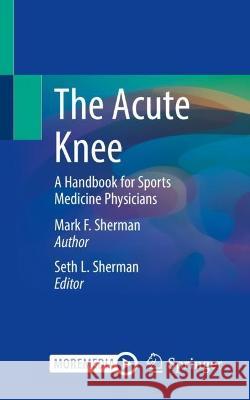The Acute Knee » książka
topmenu
The Acute Knee
ISBN-13: 9783031328435 / Angielski / Miękka / 2023
This handbook presents a concise, practical approach to the physical examination and diagnosis of acute injuries of the knee. While radiological diagnostic tools like CT and MRI are important tools for orthopedic and sports medicine injuries, the skills of history taking and an accurate physical exam are no less important in educated decision-making when it comes to injury management.
The goal of this book is to make it easier for a beginning knee practitioner to take an educated history and then perform a thorough physical examination. This will invariably steer them to the course of the correct diagnosis. The focus here is on a consistent and thorough examination, including taking a full history of the injury, utilizing common physical tests, and limiting differential diagnoses. To this end, the book opens with a review of these general considerations. Subsequent chapters discuss these considerations across a number of acute knee injuries to the patella, ACL, MCL, PCL, meniscus, and multiligamentous and extensor mechanism injuries and conditions. Additional chapters describe osteochondral injuries and mimickers such as PVNS and tumors. Video clips demonstrating examination techniques are included throughout the text.
While The Acute Knee is aimed primarily at younger practitioners, it is an excellent resource for any orthopedic surgeon or sports medicine physicians looking to refamiliarize themselves with the "lost art" of physical examination for the acute knee.











